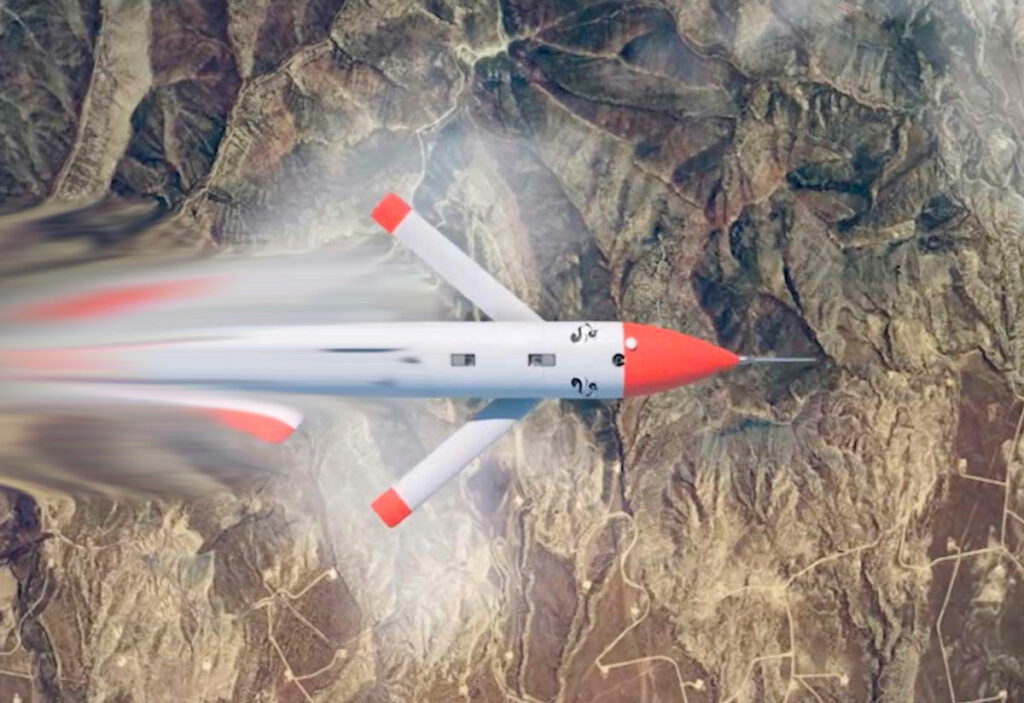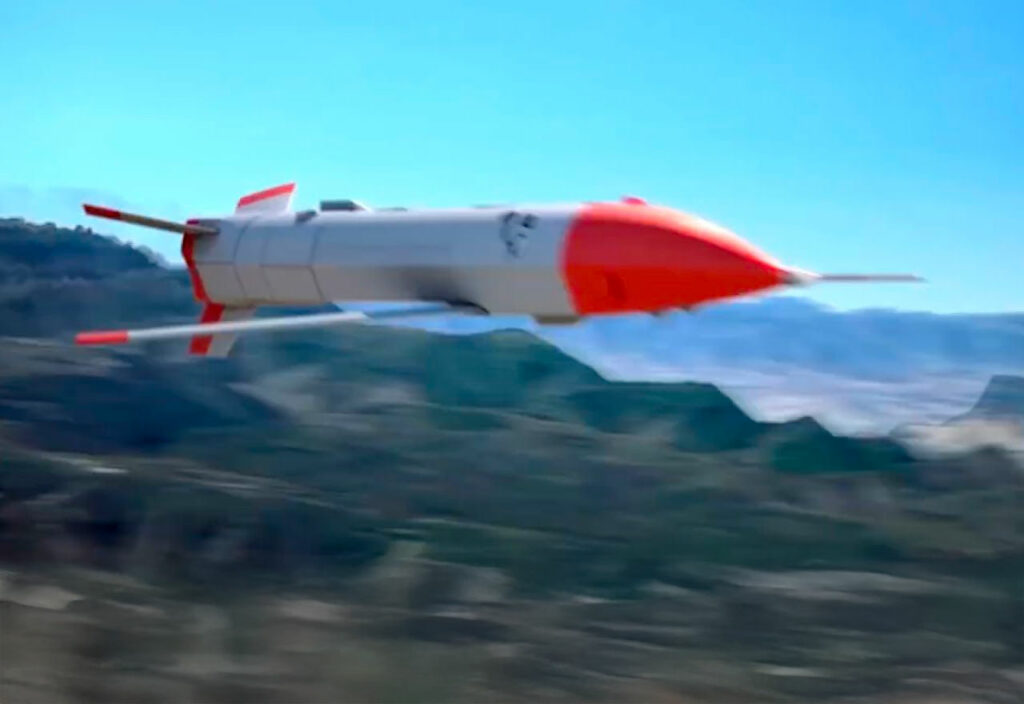Lockheed Martin’s Skunk Works developed the Speed Racer UAS to validate the StarDrive digital engineering toolset, aiming for rapid, cost-effective unmanned aircraft development.
The Lockheed Martin Skunk Works Speed Racer is an experimental unmanned aircraft system (UAS) designed to validate the StarDrive digital engineering toolset. Developed to demonstrate rapid and cost-effective design and production processes, the Speed Racer features a modular design with pop-out wings and conformal air intakes, emphasizing low observability. While specific performance metrics remain undisclosed, the UAS is intended to be an expendable, collaborative platform capable of supporting various missions, including acting as a decoy or extending the sensor capabilities of manned aircraft like the F-35. The project underscores a shift towards digital engineering in aerospace development, aiming to reduce time and costs associated with bringing new flight vehicles to operational status.

History of the Development of the Lockheed Skunk Works Speed Racer
In the early 21st century, the increasing complexity and cost of developing military aircraft prompted a reevaluation of traditional design and manufacturing processes. Lockheed Martin’s Skunk Works, renowned for pioneering projects like the SR-71 Blackbird and F-117 Nighthawk, sought to address these challenges by embracing digital engineering.
In September 2020, during the Air Force Association’s annual conference, Skunk Works introduced the Speed Racer project. This initiative aimed to validate the StarDrive digital engineering toolset, a comprehensive approach designed to integrate digital models across all stages of aircraft development. The objective was to reduce the time and cost associated with producing and operating new flight vehicles for the military.
The Speed Racer project was conceived as a proof of concept to demonstrate the efficacy of the StarDrive toolset. By utilizing a unified digital model, the project sought to streamline collaboration across engineering, supply chain, manufacturing, and sustainment. This approach was anticipated to enable rapid prototyping and iterative testing, reducing the traditional development timeline.
In February 2021, Lockheed Martin released a teaser video showcasing the Speed Racer UAS. The footage depicted an orange and yellow drone deploying from a Beech 1900 (C-12 Huron in U.S. military service), unfolding its wings, and accelerating away. The drone featured the iconic Skunk Works logo, confirming its association with the project.
The Speed Racer’s design emphasized modularity and expendability, aligning with the military’s interest in low-cost, collaborative unmanned systems. The UAS was envisioned to support various missions, including acting as a decoy, extending sensor capabilities, or conducting electronic warfare. Its development underscored a broader shift towards digital engineering and rapid prototyping in aerospace.
As of September 2022, Lockheed Martin announced plans to commence flight testing of the Speed Racer. The testing campaign aimed to validate the UAS’s design and operational capabilities, with a focus on demonstrating the advantages of the StarDrive digital engineering approach. The Speed Racer project represents a significant step in evolving military aviation towards more agile and cost-effective development processes.
Design of the Lockheed Skunk Works Speed Racer
The Speed Racer UAS features a design that emphasizes modularity, low observability, and cost-effectiveness. While specific dimensions and weight have not been publicly disclosed, available imagery and descriptions provide insights into its configuration.
The aircraft is equipped with pop-out wings that deploy after launch, optimizing storage and transport efficiency. The conformal air intakes are integrated into the fuselage, contributing to a sleek profile that enhances aerodynamic performance and reduces radar cross-section.
The modular design allows for the integration of various payloads, enabling the UAS to perform multiple roles, such as acting as a decoy, conducting electronic warfare, or extending the sensor range of manned aircraft. This flexibility is achieved through a standardized interface, facilitating rapid reconfiguration for different mission requirements.
The emphasis on digital engineering in the Speed Racer’s development process has led to a streamlined design phase, reducing the time from concept to prototype. The use of the StarDrive digital engineering toolset has enabled a cohesive integration of design, manufacturing, and testing processes, resulting in a more efficient development cycle.
One potential drawback of the design is its expendable nature, which, while cost-effective for certain missions, may limit its applicability in scenarios where asset recovery is desirable. Additionally, the reliance on digital engineering tools necessitates a robust digital infrastructure and expertise, which may present challenges in terms of implementation and maintenance.
Overall, the Speed Racer’s design reflects a balance between innovation and practicality, leveraging advanced digital tools to create a versatile and efficient unmanned platform.
Performance of the Lockheed Skunk Works Speed Racer
As of now, specific performance metrics for the Speed Racer UAS, such as engine specifications, speed, operational altitude, and range, have not been publicly disclosed by Lockheed Martin. The focus of the project has been primarily on demonstrating the effectiveness of the StarDrive digital engineering toolset and the rapid development capabilities it enables.
The design suggests an emphasis on modularity and expendability, indicating that the UAS is intended for missions where cost-effectiveness and rapid deployment are prioritized over high performance. The modular design allows for various payloads, enabling the UAS to perform multiple roles, such as acting as a decoy, conducting electronic warfare, or extending the sensor range of manned aircraft.
As of now, specific performance metrics for the Lockheed Martin Skunk Works Speed Racer Unmanned Aircraft System (UAS) have not been publicly disclosed. The primary focus of the Speed Racer program is to validate the StarDrive digital engineering toolset, emphasizing rapid development, modularity, and cost-effectiveness. Consequently, detailed information regarding the aircraft’s engine specifications, power output, speed, operational altitude, and range remains proprietary.
The design of the Speed Racer suggests a focus on modularity and expendability, indicating that it is intended for missions where cost-effectiveness and rapid deployment are prioritized over high performance. The modular design allows for the integration of various payloads, enabling the UAS to perform multiple roles, such as acting as a decoy, conducting electronic warfare, or extending the sensor range of manned aircraft.
In terms of power comparison, without specific data, it’s challenging to assess the Speed Racer’s performance relative to other unmanned systems. However, its design philosophy aligns with current trends in developing Collaborative Combat Aircraft (CCA), which prioritize adaptability and cost-efficiency over raw performance metrics.

Variants
As of now, there are no publicly disclosed variants of the Lockheed Martin Skunk Works Speed Racer Unmanned Aircraft System (UAS). The Speed Racer serves as a proof of concept for the StarDrive digital engineering toolset, focusing on demonstrating rapid development and modularity. While the modular design allows for various payload integrations, enabling the UAS to perform multiple roles, such as acting as a decoy, conducting electronic warfare, or extending the sensor range of manned aircraft, specific variants with distinct names or specifications have not been announced.
The emphasis on modularity suggests potential for future adaptations or specialized versions, but as of now, the Speed Racer remains a singular platform within Lockheed Martin’s portfolio.
Military use
As of now, the Lockheed Martin Skunk Works Speed Racer Unmanned Aircraft System (UAS) has not been deployed in military operations or combat scenarios. The primary purpose of the Speed Racer is to validate the StarDrive digital engineering toolset, focusing on rapid development, modularity, and cost-effectiveness.
Consequently, detailed information regarding its armament, operational deployments, or engagements in conflicts is not available. The Speed Racer serves as a proof of concept, and its potential applications in military contexts remain speculative at this stage.
The Lockheed Martin Skunk Works Speed Racer Unmanned Aircraft System (UAS) represents a significant advancement in aerospace development, emphasizing rapid design, modularity, and cost-effectiveness through the validation of the StarDrive digital engineering toolset. While specific performance metrics and potential military applications remain undisclosed, the Speed Racer serves as a proof of concept, highlighting the potential for future unmanned systems to be developed more efficiently and effectively.
Back to the experimental aircraft section.